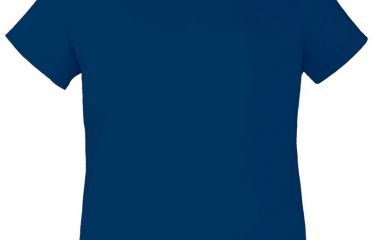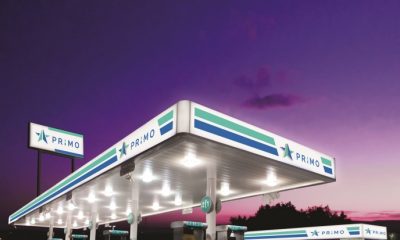Media & Substrates
Published
12 years agoon
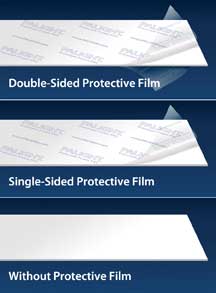
Most plastic sheets perform superbly in a wide range of graphics applications and can be used to create weather-resistant signs, displays, or P-O-P materials. Their smooth surface is ideal for all types of graphics, and they require little surface preparation or treatment. This article focuses on polycarbonate (PC) and polyvinyl chloride (PVC), both of which are commonly used for signage and graphics.
Most plastic sheets perform superbly in a wide range of graphics applications and can be used to create weather-resistant signs, displays, or P-O-P materials. Their smooth surface is ideal for all types of graphics, and they require little surface preparation or treatment. This article focuses on polycarbonate (PC) and polyvinyl chloride (PVC), both of which are commonly used for signage and graphics.
Cleaning/pretreating
The surface of PC or PVC sheets should be cleaned before printing. Isopropyl alcohol and a clean cloth can be used to clean the surface and remove static electricity. Depending
on the specific application, certain pre-treatments may also be required.
Screen printing
The screen-printing process is relatively simple when working with PC or PVC. The surface of PVC has a closed-cell, matte finish that allows mistakes to wipe off easily with the appropriate thinner. Vinyl and vinyl/acrylic, solvent-based inks are compatible with foam PVC. Only acrylic-based ink may be used with PC. The use of water-based screen has also had some success with PC/PVC material, but you must follow directions from ink manufacturers very carefully. Surface preparation of PC/PVC for screen printing is similar to those of painting.
The surface to be screen printed must remain dry, clean, and grease free. Any surface scratches on the PC/PVC will have a tendency to show as a shadow through the ink.
It is highly recommended that the surface be cleaned with a white cloth moistened with isopropyl alcohol prior to printing. All screen-printing inks should be tested in a manner that duplicates your printing process before initiating production, especially when using PC. It is strongly recommended to consult the appropriate ink manufacturer regarding any required ink additives, such as a catalyst, for proper adhesion and exterior usage.
Screen-printing ink should air dry, rather than be heat dried. Temperatures in excess of 150°F may cause warping or bowing of foam PVC material; PC is suitable for high temperatures. All UV screen-printing inks that are compatible with rigid PVC will work on foam PVC. The most important factor to be considered when using UV systems is the curing oven. Low-wattage bulbs should be used to keep the temperature below 150°F. UV curing systems that have variable-speed conveyors are considered the best type to use with foam PVC.
Direct digital printing
Wide-format inkjet printers use various ink and ink-curing technologies to allow high-quality printing at relatively high speeds. High-quality digital printing depends on various factors: printer capabilities, ink technology and quality, type of printing substrate and quality, and machine operator. Note that foamed PVC is suitable for use with UV and solvent-based digital inks, and for IR drying when water-based inks are used.
The substrate’s protective polyethylene film mask (Figure 1) helps prevent surface abrasion and stains. However, removing the protective film may cause an increase of static electric charge, which can affect ink coverage and adhesion. Therefore, after peeling the film away from the sheet, the static electricity that has built up on the sheet should be discharged using an ionized gun or a suitable device provided by the printer manufacturer. The surface should be clean before printing. Carefully inspect each panel to ensure there is no dust, fingerprints, residue, or other problematic substances that may affect ink coverage or adhesion. If needed, the plastics should be cleaned with a damp rag, or with isopropyl alcohol.
The distance between the inkjet printhead and the substrate can have a significant effect on print quality (Figure 2). Manufacturer specifications, combined with and operator experience, should determine printhead distance from the substrate. The suggested starting distance should not be more than 2 mm from the printhead to the substrate.
Ink
PC/PVC is suitable for all types of inks: aqueous, solvent-based, and UV. Consult the printer manual or contact the printer manufacturer for recommendations and compatibility information. The two main ink-curing technologies are IR (infrared), where long exposure to high temperatures in the drying tunnel may cause distortions in the sheet; and UV (Figure 3), where levels must be adjusted according the printing speed and substrate. UV overexposure can cause discoloration of both the ink and substrate. The ink system chosen should always be tested for adequate adhesion. To assess adhesion, conduct a cross-hatch rest after the ink has dried.
Omer Shoham is the advertising applications manager at the Palram headquarters located in Israel.
Terminology
Chemical resistance A material or surface is exposed to the relevant chemical for a longer, defined period of time and the relevant area then inspected microscopically. Possible changes which could occur include: discoloration, alteration in the degree of shine, softening, swelling, detachment of coatings, and blistering.
Ease of fabrication The ability of the printed substrate to undergo machining, cutting, routing, gluing, drilling, fastening, adhesive bonding, welding, and other processes.
Impact resistance In material science and metallurgy, toughness is the ability of a material to absorb energy and plastically deform without fracturing. Material toughness is defined as the amount of energy per volume that a material can absorb before rupturing. It is also defined as the resistance to fracture of a material when stressed.
Light diffusion (especially as it relates to hiding LEDs) Diffuse reflection is the reflection of light from a surface such that an incident ray is reflected at many angles rather than at just one angle as in the case of specular reflection. An illuminated ideal diffuse reflecting surface will have equal luminance from all directions in the hemisphere surrounding the surface (Lambertian reflectance).
Light transmission Percentage of incident visible light that passes through an object. In the field of optics, transparency is the physical property of allowing light to pass through a material; translucency only allows light to pass through diffusely. The opposite property is opacity. Transparent materials appear clear, with the overall appearance of one color, or any combination leading up to a brilliant spectrum of every color.
Service-temperature range Thermal degradation of polymers is molecular deterioration as a result of overheating. At high temperatures the components of the long chain backbone of the polymer can begin to separate (molecular scission) and react with one another to change the properties of the polymer. Thermal degradation can present an upper limit to the service temperature of plastics as much as the possibility of mechanical property loss.
Vacuum forming This is a simplified version of thermoforming, whereby a sheet of plastic is heated to a forming temperature, stretched onto or into a single-surface mold, and held against the mold by applying vacuum between the mold surface and the sheet. The vacuum-forming process can be used to make most product packaging, speaker casings, and even car dashboards.
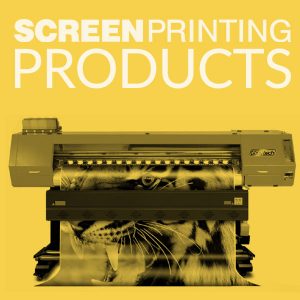
Subscribe

Magazine
Get the most important news
and business ideas from Screenprinting Magazine.
Most Popular
-

 Case Studies2 months ago
Case Studies2 months agoHigh-Density Inks Help Specialty Printing Take Center Stage
-

 Art, Ad, or Alchemy2 months ago
Art, Ad, or Alchemy2 months agoF&I Printing Is Everywhere!
-
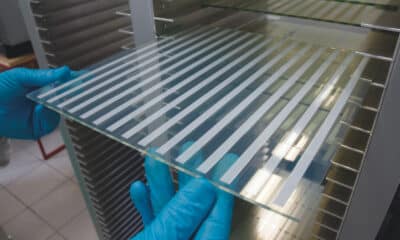
 Andy MacDougall2 months ago
Andy MacDougall2 months agoFunctional and Industrial Printing is EVERYWHERE!
-

 Columns3 weeks ago
Columns3 weeks ago8 Marketing Mistakes Not to Make When Promoting Your Screen Printing Services Online
-

 Editor's Note3 weeks ago
Editor's Note3 weeks agoLivin’ the High Life
-

 Marshall Atkinson3 weeks ago
Marshall Atkinson3 weeks agoHow to Create a Winning Culture in Your Screen-Printing Business
-

 Thomas Trimingham2 months ago
Thomas Trimingham2 months ago“Magic” Marketing for Screen Printing Shops
-

 News & Trends2 months ago
News & Trends2 months agoWhat Are ZALPHAS and How Can You Serve Them in Your Print Business?

